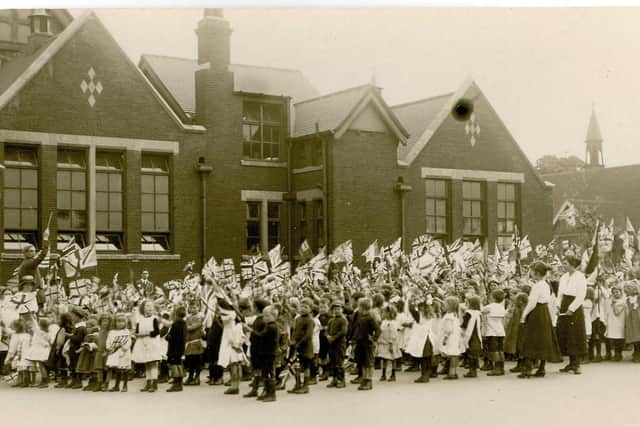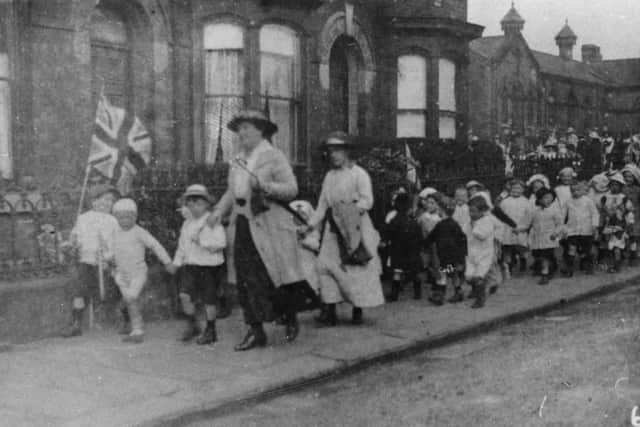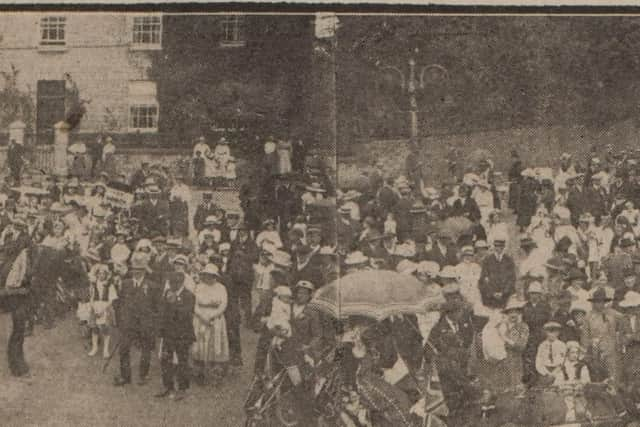Slow march of peace in Doncaster borough after the First World War


Instead, peace came quietly and cautiously to the borough, its people not quite believing that war was over.
Local history volunteer Lynda Regan has been scouring the archives to discover what life was like in wartime Doncaster, before the Peace Treaty was finally signed in June 1919 – part of her work for Doncaster 1914-18, a community heritage project supported by National Lottery Players through the National Lottery Heritage Fund.
Advertisement
Hide AdAdvertisement
Hide AdShe’s discovered that Doncaster celebrated peace just as it had fought war – pulling together as neighbours and communities, and never forgetting those who needed their kindness. While Doncaster’s people were impatient for peace, however, the question of how or when to celebrate it became a hotly-debated topic…


On the date when peace ‘officially’ arrived – 28 June 1919 – with the signing of the Treaty of Versailles, the Mayor of Doncaster addressed a crowd outside the Mansion House at 4pm. Flags and bunting decorated the building, but the announcement was modest and muted, compared to the Mayor’s speeches for Armistice Day just 7 months before. The mood in town was very different too: people were fed up of waiting for the news. They’d have to wait even longer to celebrate, however, as the Mayor asked that people refrain from boisterousness till a later date when there was proof that all sides would hold to the treaty, although reassuring:
“We have every reason to be thankful that we in Doncaster have done our part during the war. We were one of the first towns to raise men to go out to France, and we shall not be among the last in sharing with others the joy and gladness of the peace that has come to pass”.
In the meantime, people waited for the government to set a national date for peace festivities, so that the whole country could celebrate together, and the Mayor of Doncaster “made a strong appeal to the inhabitants of Doncaster to attend some form of public worship”, this being a time when religious observance was much more widespread than today.
Advertisement
Hide AdAdvertisement
Hide AdThanksgiving services were held in churches throughout the country on Sunday July 6. Doncaster’s Thanksgiving Service, held in the Parish Church – now Doncaster Minster – was preceded by a grand parade, starting from the Mansion House. The Mayor and Corporation were joined by the Doncaster detachment of the 3rd Volunteers Battalion of the King’s Own Yorkshire Light Infantry, and many other local organisations, including the boy scouts, and the service was taken by the Bishop of Sheffield. Many other churches around the borough held their own services on the same day, including neighbouring places of worship like the United Free Church at Priory Place.


Although many towns and villages hung flags from their windows to mark the announcement of the Peace Treaty, the festivities began in earnest on 17 July – in Hexthorpe. Local residents couldn’t wait any longer, enjoying street parties that went on for days, “Showing Doncaster the way”, as one local reporter put it.
The government had decided that Saturday 19 July would be the official Peace Day of ‘national rejoicing’, and with the morning weather beautifully warm and sunny, Doncaster was looking forward to enjoying the entertainment ahead. Unfortunately, the rain came, and many evening bonfires and fireworks had to be postponed – but it didn’t dampen Doncaster’s spirits!
The promised town centre festivities organised by the YMCA were judged a great success, and every surrounding town, village and organisation held events in their own unique way, which the Doncaster Gazette reported on in great detail: while Bawtry burnt the Kaiser ‘Guy Fawkes-style’ in effigy, Conisbrough’s festivities were energetic - “the boy who fell in a tub of water at the Morley Place sports will remember Peace Day without a doubt!”
Advertisement
Hide AdAdvertisement
Hide AdNational Peace Day was followed by Doncaster’s official celebration on Friday 24 July, called Children's Day. Peace Medals were presented by the Mayor to all pupils at Christ Church Girls, Balby Girls and other schools; Conisbrough Boys received the gift of a Peace Mug and Beechfield Infants a gift of Doncaster Butterscotch and a toy. Even better, children were treated to an extra week off school for their summer holidays.


It didn’t all end there - celebrations went on right into the middle of August, with Belton’s Peace Pageant on the 1 August, and a final street party in Hexthorpe on the 15 August, dubbed "Better Late than Never".
Doncaster’s troubles and hardships certainly didn’t end with Peace Day, as local miners’ and tram workers’ strikes rumbled on, ex-servicemen struggled to find work – or even basic welfare support - and worried minds looked to the deteriorating political situation in Russia. During that joyful summer of 1919, however, Doncaster’s people put heart and soul into the festivities, “feteing the living”, and hoping against hope that there would never be a need for such celebrations again.
To find out more about life in Doncaster during the First World War, or to share stories and photographs about your family or neighbourhood’s wartime history, please visit www.doncaster1914-18.org.uk – a free online archive free for everyone to use!